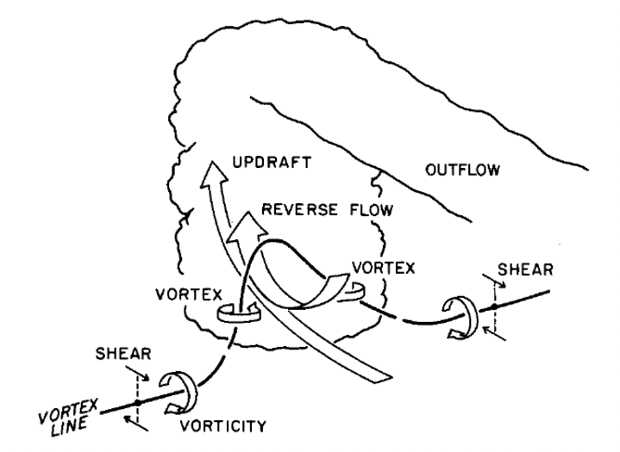Observations were obtained from Explorer and Doppler radar of a small, isolated cumulonimbus developing in a wind field with relatively little directional shear. The storm displayed a high degree of symmetry about a vertical plane through the center of the storm oriented parallel to the wind shear vector. Single-Doppler observations of this storm reveal a region in which the horizontal component of the wind vector was opposite to that of the mid-level environmental wind, suggesting the presence of a vortex pair circulation. The storm was simulated with a three-dimensional cloud model which reproduced these and some of the other observed storm characteristics. The environmental wind shear in which the storm developed was similar to that of the composite sounding documented by Fankhauser and Mohr (1977) for weak, isolated or scattered storms in northeast Colorado. Therefore, this symmetric structure, involving two counter-rotating vortices, may be a common feature of isolated storms in this area. (Toutenhoofd,V. and Klemp, J.B. 1983).
Fig. 23 Duplication of Fig. 11 from Toutenhoofd and Klemp. Conceptual picture of the formation of a vortex pair within a storm by tilting of horizontal vorticity in the environmental shear.
- Explorer Participation in the National Hail Research Experiment (NHRE)
- Precipitation Formation via the Ice Process in NE Colorado
- The Discovery by Explorer of Adiabatic Ascent in Clouds of the High Plains
- Discovery of Penetrative Downdrafts
- Observation of a Counter Rotating Vortex Pair in a Cumulonimbus
- Explorer Observations of Silver Iodide Seeding in Cumulus Clouds
- Studies of Initial Cloud Electrification with Explorer
- Electrical/Microphysical Measurements in New Mexico
- Measurements on Explorer of Particle Charge, Size and Shape
- Flight in New Mexico to 40,200 ft with Particle Image and Charge Measurements
- Results from CaPE in Florida in 1991
